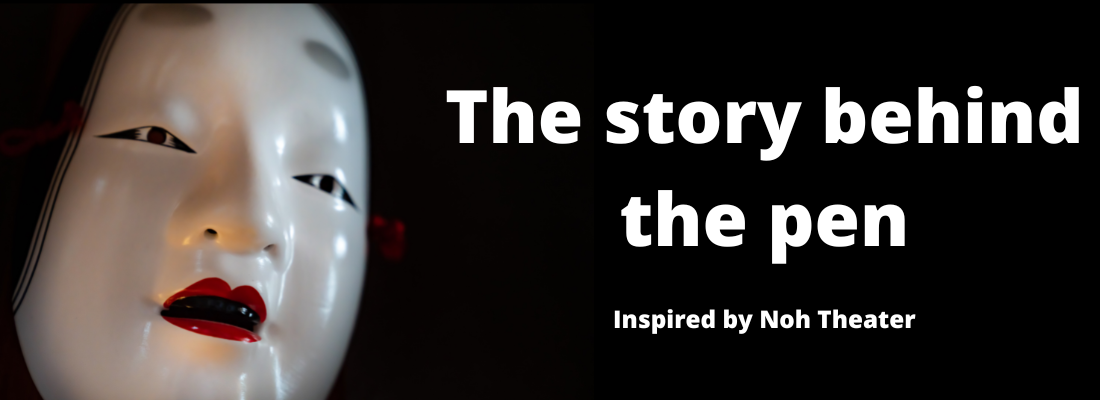Have you ever wondered where the Urushi artisans get their inspiration? Maki-e pens are often inspired by Japanese mythology or culture. The pen we’ll talk about today was inspired by Japanese Noh theater.
Let’s dive into the story behind the pen, Hachi-no Ki.

Hachi-no Ki pen
Hachi-no ki means “potted trees,” and refers to a bonsai tree placed in a deep pot. While modern bonsai are typically placed in shallow pots, some practitioners still use hachi-no ki.
Bonsai is the art of growing and shaping small trees. Bonsai practitioners attempt to produce small trees that mimic the shape of trees in nature. They are often carefully tended for many years. While many bonsai trees live to be over one hundred years old, the oldest bonsai tree is thought to be over 600 years old.

An example of hachi-no ki
Photo: ermell, CC BY-SA 3.0, via Wikimedia Commons
This pen is inspired by a Japanese Noh play of the same name, Hachi-no ki. In the play, Genzaemon Tsuneyo, a poor ronin (unemployed samurai), and his wife receive a visitor on a very cold night. They offer the stranger a simple meal, the best they could afford. Tsuneyo had no extra firewood, and instead warmed their visitor by cutting down his three precious hachi-no ki and placing them in the fire. The three treasured bonsai trees were sakura (cherry), ume (Japanese apricot), and matsu (pine).
The story is well-known throughout Japan. It is the inspiration for many types of artwork, including ukiyo-e woodblock prints.

Tsuneyo was willing to sacrifice his most treasured possessions to warm a complete stranger. Little did the ronin know, the visitor was actually a feudal lord named Hohjo Tokiyori. Tokiyori was in disguise and had gotten lost in the area.
Seeing Tsuneyo’s strong character and willingness to sacrifice for others, Tokiyori quickly hired him as his most trusted advisor. Tokiyori bestowed upon him three tracts of land named sakura, ume, and matsu, after the three hachi-no ki Tsuneyo had sacrificed on his behalf.
The picture on the barrel of the pen shows the ronin after his appointment as advisor. He proudly wears fine clothing, including a red sash, and carries a bow.

The tree and flowers on the cap represent the sakura, ume, and matsu.

Hachi-no ki was hand-painted by Hakusan Taniguchi (artisan name: Masamune). He is a talented maki-e artistan, and many of his works have been accepted and rewarded at national art exhibitions.

Hakusan was an apprentice of Masanori Omote (another Danitrio artisan). He is recognized by the Japanese government as a Dento Kogei-shi, which is an honorary title meaning "master of traditional crafts." This title is given only to a select few artisans who have a significant contribution to their craft.
When we interviewed him, Hakusan said, “I hope that those who use my maki-e pieces or simply appreciate them aesthetically will feel warmth from these splendid objects, and from the beauty and tradition of maki-e.”
Visit our website for more information on Hakusan’s beautiful pen.

